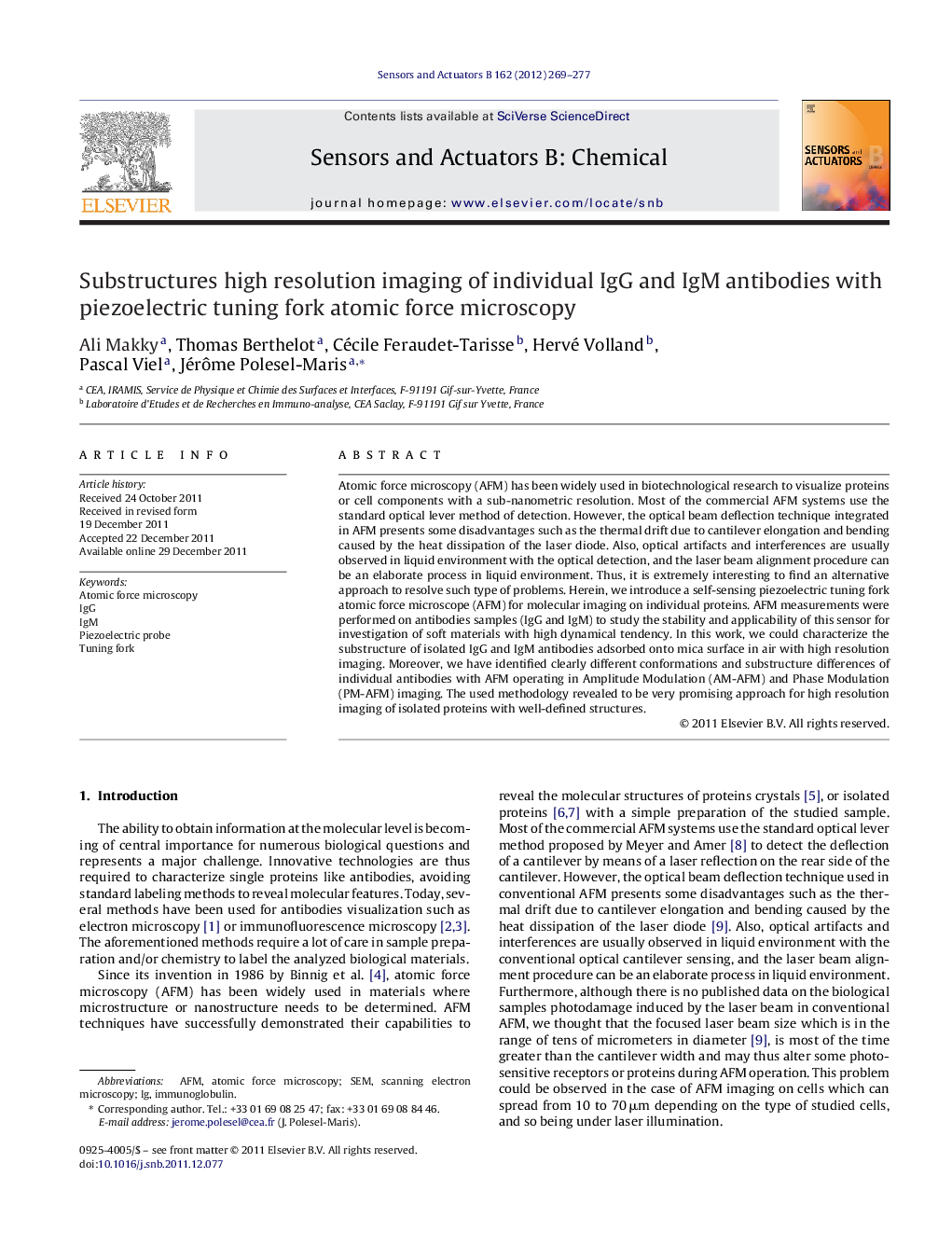| Article ID | Journal | Published Year | Pages | File Type |
|---|---|---|---|---|
| 740703 | Sensors and Actuators B: Chemical | 2012 | 9 Pages |
Atomic force microscopy (AFM) has been widely used in biotechnological research to visualize proteins or cell components with a sub-nanometric resolution. Most of the commercial AFM systems use the standard optical lever method of detection. However, the optical beam deflection technique integrated in AFM presents some disadvantages such as the thermal drift due to cantilever elongation and bending caused by the heat dissipation of the laser diode. Also, optical artifacts and interferences are usually observed in liquid environment with the optical detection, and the laser beam alignment procedure can be an elaborate process in liquid environment. Thus, it is extremely interesting to find an alternative approach to resolve such type of problems. Herein, we introduce a self-sensing piezoelectric tuning fork atomic force microscope (AFM) for molecular imaging on individual proteins. AFM measurements were performed on antibodies samples (IgG and IgM) to study the stability and applicability of this sensor for investigation of soft materials with high dynamical tendency. In this work, we could characterize the substructure of isolated IgG and IgM antibodies adsorbed onto mica surface in air with high resolution imaging. Moreover, we have identified clearly different conformations and substructure differences of individual antibodies with AFM operating in Amplitude Modulation (AM-AFM) and Phase Modulation (PM-AFM) imaging. The used methodology revealed to be very promising approach for high resolution imaging of isolated proteins with well-defined structures.
